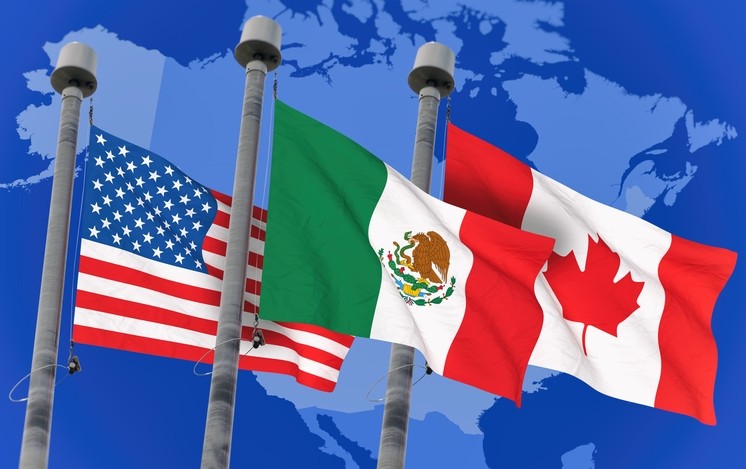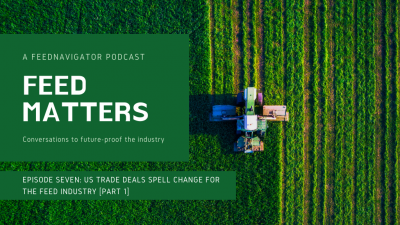Trilateral NAFTA revamp deal struck

The Trump administration announced Sunday [September 30] that it had reached an agreement with Canada regarding the negotiations to revise the 24-year-old North American Free Trade Agreement (NAFTA). Previously a revised trade deal with Mexico had been announced.
“Today, Canada and the United States reached an agreement, alongside Mexico, on a new, modernized trade agreement for the 21st Century: the United States-Mexico-Canada Agreement (USMCA),” said Robert Lighthizer, US trade representative (USTR) and Chrystia Freeland, Foreign Affairs Minister in Canada in a joint statement. “USMCA will give our workers, farmers, ranchers and businesses a high-standard trade agreement that will result in freer markets, fairer trade and robust economic growth in our region.”
The agreement also is expected to provide “new opportunities” for residents of North America, the pair said.
In the US, the agreement has to be signed by President Donald Trump and submitted to Congress for approval.
“We’ve done this in 14 months,” said Lighthizer during a press conference about the agreement. “In trade negotiating terms that’s like warp speed.”
The joint agreement is anticipated, in part, to promote US agricultural interests, said the office of the USTR. The deal addresses adding new markets and expanding agricultural exports along with rural jobs.
US’s top and third largest trading partners for agricultural products and food are Canada and Mexico, the office reported. Agricultural products will continue to have zero tariffs, as they did with NAFTA, and US producers are set to have increased access to export animal products including dairy, poultry and eggs to Canada, while Canada has improved access to US markets for dairy, peanuts and peanut products.
Canada also has agreed to allow additional market access for several individual dairy products including fluid milk, cream, whey and skim milk powder, according to the agreement. Canada also is set to end use of two of its milk price classes, maintain the price of skim milk solids on par with the US price for nonfat dry milk, and restart a program using skim milk as an animal feed ingredient to help cap exports of that product.
The US granted reciprocal access to the dairy import market on a “ton-for-ton” basis, according to the agreement.
In terms of biotechnology, the new agreement covers the use of new practices like gene editing and establishes provisions to improve information exchange said the office of the USTR. All three countries also agreed to limit trade-distorting practices and increase transparency related to export restrictions used for food security reasons.
Regarding sanitary and phytosanitary (SPS) measures, all three countries said they would focus on science-based SPS measures including by improving transparency in how they are developed and used, revising the certification process and equivalency assessment, having systems-based audits, ensuring the compatibility of measures used and improving transparency for import examinations. A new method for resolving issues also was developed.
The agreement also includes strong patent protection and protections for agricultural “innovators,” reported the office of the USTR.
Industry perspectives
Several North American feed industry associations and feed crop producer organizations said they were pleased that a three-way trade agreement had been completed.
The America Feed Industry Association (AFIA) commended the administration for the work done to develop the trilateral agreement. The US feed and pet food industry relies on its free-trade access to Canada and Mexico and since the start of NAFTA, that market has expanded from $669m in 1993 to more than $3.1bn.
The association has been encouraging the NAFTA renegotiation process to keep duty-free market access, use science-based regulations, update sanitary and phytosanitary issues and revise Canada’s “unfair” feed registration elements.
“Over the past year, the US animal food manufacturing industry chanted ‘do no harm’ as it watched the administration on several occasions nearly reach a breaking point in its negotiations with Canada and Mexico over NAFTA,” Joel Newman, AFIA president and CEO said in a statement provided to us. “Today, the industry can finally breathe a sigh of relief as it recognizes the administration has listened to the needs and concerns of the agricultural community and reached an agreement that maximizes and strengthens the progress and goodwill US industries have built with Canada and Mexico over the past two decades.”
The new trade agreement should allow US animal feed exports to expand, even with increased global competition, he said. “It does this while ushering in a new era of trade agreements – one that is built on groundbreaking provisions that increase transparency among trading partners while rewarding science and innovation that continues to help today’s industries meet the needs of tomorrow’s consumers,” he added.
The National Grain and Feed Association (NGFA) and the North American Export Grain Association (NAEGA) also recognized the work done by all three countries to establish the trade deal.
“The announcement of a new US-Mexico-Canada Agreement (USMCA) represents a significant, positive step in modernizing and further enhancing North American food and agricultural commerce that has and will continue to benefit economic growth and consumers in this hemisphere, and further enhance investment and food security,” said Randy Gordon, NGFA president and CEO, and Gary Martin, NAEGA president and CEO, in a joint statement.
Both organizations were pleased to see several provisions of the revised agreement including the new language addressing agricultural biotechnology, the focus on science-based sanitary and phytosanitary measures and the agreement that grading standard and services for agricultural products like grains or oilseeds would be independent from the domestic registration processes, they said.
Additionally, the Animal Nutrition Association of Canada (ANAC) told us that it is reviewing the new agreement to identify anticipated effects for the Canadian feed industry.
“The feed industry is an important component of the agri-food chain and intersects with everyone from grain growers to suppliers of nutrient supplements to producers of meat, eggs, and milk,” ANAC said. “For this reason, the successes of each of our industries are closely linked - when producers do well, we do well.”












